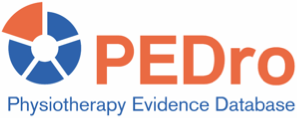Whiplash associated disorder (WAD), caused by sudden cervical spine hyperflexion and hyperextension during motor vehicle accidents, is commonly associated with ongoing symptoms. This systematic review aimed to summarise and appraise the quality of the evidence for the use of acupuncture in the treatment of WAD.
Eleven databases were searched for published studies with no language restrictions from inception to 1st October 2023. Eligible studies were randomised controlled trials (RCTs) that used acupuncture to treat patients with WAD, including electroacupuncture and dry needling, either alone or combined with other treatments. WAD was classified using the Quebec Task Force diagnostic criteria. The comparator was usual care which could involve sham or conventional treatments other than acupuncture (e.g. physiotherapy, medication). The primary outcome was neck pain, measured using a visual analogue or numerical rating scale score. Secondary outcomes were cervical spine range of motion (ROM), the Neck Diasability Index (NDI) and adverse events. Study selection and assessment of methodological quality, using the Cochrane Collaboration Risk of Bias tool (version 2), were performed by two authors. Evidence certainty was assessed using the Grading of Recommendations, Assessment, Development, and Evaluation (GRADE) system. Meta-analyses using random and fixed effects models assessed standardised mean differences (SMDs) and 95% confidence intervals (CIs). Subgroup analyses were performed according to the type of acupuncture used.
Eight trials (n = 525) were included in the systematic review and seven trials (n = 502) in the meta-analysis. Five trials compared acupuncture to usual care, medication or sham. Types of acupuncture interventions studied included general acupuncture (5 trials), electroacupuncture (2 trials), and motion-style acupuncture treatment (MSAT) (1 trial). Five trials involved at least six sessions, one trial had between 2-6 sessions and one trial has one session. Only 5 out of 8 trials reported on adverse events. Six trials were rated as being at low risk of bias. High risk of bias was noted in deviations from intended interventions (1 trial); missing outcome data (2 trials); and measurement of the outcome (1 trial).
Compared to usual care, any type of acupuncture improved pain (SMD = -0.57, 95% CI: -0.86 to -0.28, I2= 51%, n = 423, 6 trials, moderate certainty evidence) and cervical spine extension ROM (SMD = 0.47, 95% CI: 0.05 to 0.89, I2= 56%, n = 216, 3 trials, low certainty evidence); but no between-group differences were found for other cervical spine ROM or the NDI (SMD = -0.17, 95% CI: -0.51 to 0.17, I2= 69%, n = 472, 6 trials). All reported adverse events were graded as mild, except for one which was moderate. According to subgroup analyses, only general acupuncture (SMD = -0.50, 95% CI: -0.93 to -0.06, I2= 40%, n = 152, 3 trials) and MSAT (SMD = -0.85, 95% CI: -1.27 to -0.44, n = 97, 1 trial) were effective for improving pain.
Following WAD a small number of studies demonstrated that acupuncture, either used alone or in combination with other treatments, may improve pain and extension ROM compared to usual care involving conventional or sham treatments. Treatment effects varied according to the type of acupuncture used.
Lee SH, Park SY, Heo I, Hwang EH, Shin BC, Hwang MS. Efficacy of acupuncture for whiplash injury: a systematic review and meta-analysis. BMJ Open. 2024 Jan 17;14(1):e077700. doi: 10.1136/bmjopen-2023-077700



